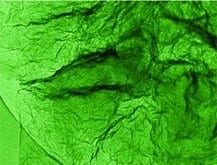 Renewable energy sources are becoming increasingly more important in our society, and we all know that their rapid development leads to an urgent demand for efficient and sustainable energy-storage technologies. Graphene, a two-dimensional carbon structure, is one of the key materials scientists use to develop new capacitors and supercapacitors for energy storage. It is already possible to adjust the physical and chemical properties of this versatile carbon material by altering its electronic, mechanical, and chemical structure in many ways, such as modifying surface area, pore geometry, composition, functional sites, etc.
Renewable energy sources are becoming increasingly more important in our society, and we all know that their rapid development leads to an urgent demand for efficient and sustainable energy-storage technologies. Graphene, a two-dimensional carbon structure, is one of the key materials scientists use to develop new capacitors and supercapacitors for energy storage. It is already possible to adjust the physical and chemical properties of this versatile carbon material by altering its electronic, mechanical, and chemical structure in many ways, such as modifying surface area, pore geometry, composition, functional sites, etc.
In search for new supercapacitor materials, scientists from Wisconsin, USA, and Max-Planck-Institutes in Mainz and Potsdam, Germany, have now successfully combined the benefits from different modifications of graphene. They developed highly crumpled, nitrogen-doped graphene nanosheets with a large pore volume, later called: C-NGNSs. In their recent Communication in Advanced Materials, the researchers describe how their strategy overcomes previous synthetic issues, for example achieving uniform nitrogen doping, and leads to a material with significantly improved performance parameters for supercapacitors:
The ultrahigh pore volume (3.42 cm3 g-1) provides rich sites for adsorbing ions, accelerating electron transfer, or decreasing electric-resistance loss – important factors for the performance of carbon-nanostructure-based supercapacitors. At the same time, C-NGNSs maintain the two-dimensional nanostructure of graphene with its high conductivity and excellent mechanical strength. The high nitrogen content (up to 10%) favors the long-term electrochemical stability, and the uniform dispersion of the covalently bond nitrogen leads to an excellent cycling performance – a feature particularly important with respect to the cyclic nature of renewable energy sources.
Besides the great properties of C-NGNSs, the researchers present an extremely attractive and economical synthesis strategy that leads to very high yields and implies feasibility for mass production.
So, these unique crumpled nitrogen-doped graphene structures are promising electrode materials for supercapacitors with high capacity, excellent rate capability, and long-term stability. But it turns out that this is not all! Besides energy storage and energy conversion systems, the materials are also interesting for adsorption or separation purposes and may even find applications in catalysis: C-NGNSs show comparable catalytic activity to platinum-based catalysts for oxygen reduction in alkaline solution, a key to cathodes of various fuel-cell systems.

















